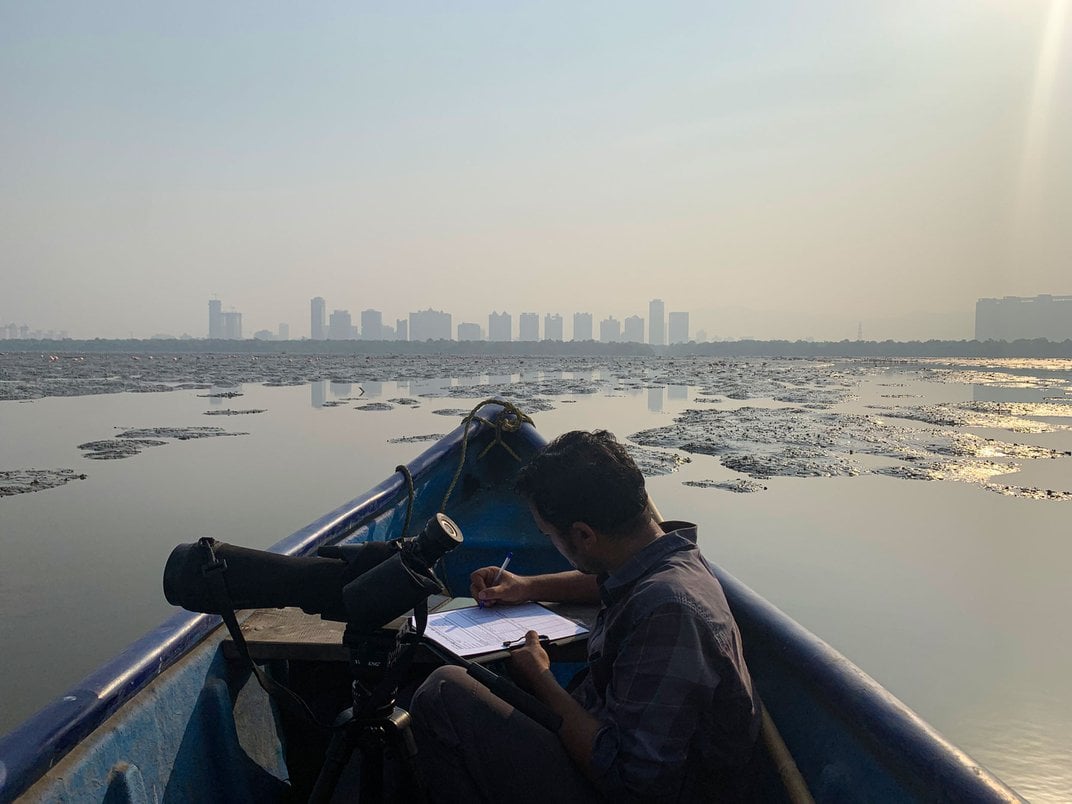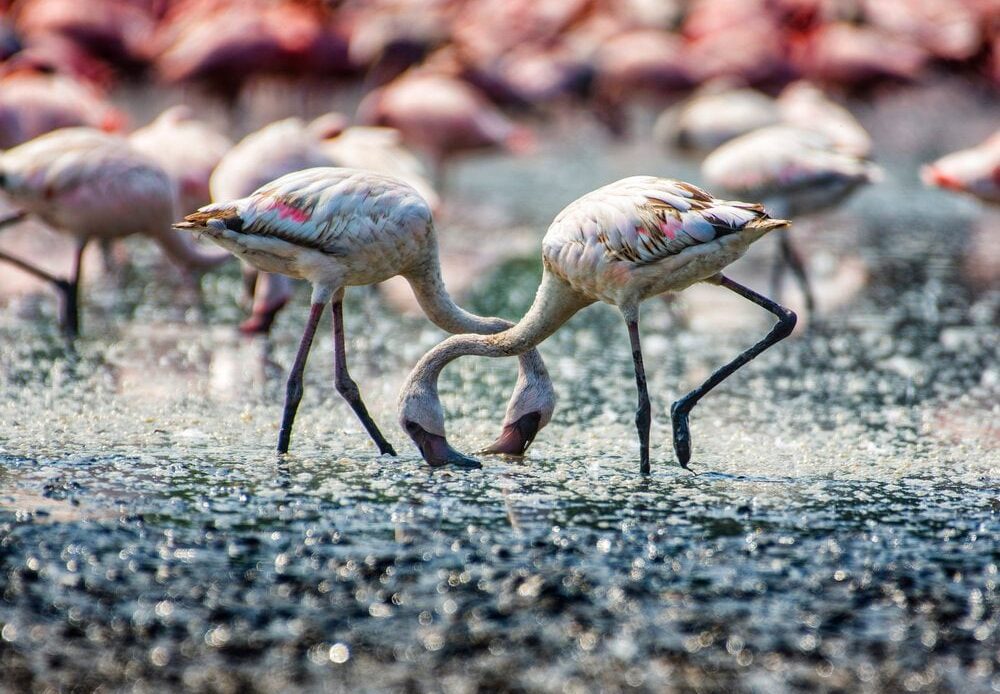For several decades, flocks of lesser and greater flamingos have returned to a sliver of wetlands on the shoreline of Mumbai, India, increasing the population 13-fold. Their arrival has been a source of pride for local people, but development pressures are threatening the habitat of these feathered residents.
Puneet Vikram Singh, Nature and Concept photographer/Getty Images
It is not yet 8 a.m., and the sun is already fierce on a small rowboat anchored a half-mile from the eastern banks of Thane Creek, an inlet separating the island city of Mumbai from the Indian mainland. A yellow cloth used as a reference point for scientists flutters in the line of mangroves along the shore. Behind the trees, tall buildings shimmer in a haze of pollution; in front of them, thousands of flamingos are gathering, flying in from nearby roosting sites. As the sun ascends, the tidal water in the creek’s lower reaches ebbs, exposing the mud flats that are the flamingos’ feeding grounds. The army of pink advances.
In the boat, Mrugank Prabhu unpacks his camera, sets up his telescope and begins his count.
Prabhu is a scientist with the Bombay Natural History Society (BNHS), a 139-year-old organization involved in conservation and biodiversity research across India, which is leading an ambitious 10-year study to monitor a unique phenomenon. Every winter, thousands of greater and lesser flamingos fly into Mumbai, forming a sea of pink against a backdrop of skyscrapers, bridges and oil refineries along the 16-mile-long Thane Creek. The seasonal gathering is a source of wonder in Mumbai—and a bit of a mystery.
Mrugank Prabhu, a scientist with the Bombay Natural History Society, leads a study monitoring lesser and greater flamingos around the Thane Creek wetlands on the shoreline of Mumbai. Vaishnavi Chandrashekhar
The flamingos only began visiting Mumbai in significant numbers in the 1990s. As the city grew in the 1970s and ’80s, so did the volume of untreated sewage flowing into Thane Creek, nurturing the algae that are the flamingos’ main food and turning the area into a feeding ground for the birds. Their numbers have increased in the past two decades, from at least 10,000 in 2007 to an estimated 130,000 this year.
The phenomenon illustrates the wealth and complexity…
Click Here to Read the Full Original Article at Travel | smithsonianmag.com…
